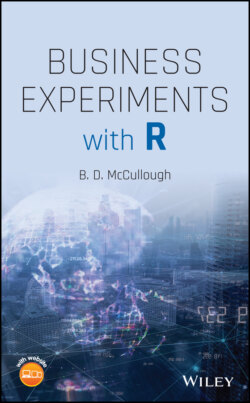Читать книгу Business Experiments with R - B. D. McCullough - Страница 20
1.2 Case: Credit Card Defaults
ОглавлениеYou work for a credit card company, and you want to figure out which customers might default. In the credit.csv dataset are 30 000 observations on six variables: credit limit (how much can be charged on the credit card), sex of the cardholder, education level of the cardholder (high school, undergrad, grad, other), whether the cardholder is married (single, married, other), the age of the cardholder in years, and whether or not the cardholder defaulted (1 = default, 0 = non‐default).
In this problem we are confronted with the ultimate questions confronting all credit issuers: whether to grant credit to each potential customer and, if so, how much? Generally, we don't want to give credit to people who are likely to default, and if we do give credit, we don't want to give more than the person can repay.
Table 1.1 Credit default rates for men and women.
| Female | Male | |
|---|---|---|
| 0 | 14 349 (79%) | 9 015 (76%) |
| 1 | 3 763 (21%) | 2 873 (24%) |
| Total | 18 112 | 11 888 |
A simple crosstab in Table 1.1 with the data shows that men are more likely to default than women. Another crosstab in Table 1.2 shows that divorced/widowed (other) persons are more likely to default.
Table 1.2 Credit default rates by marital status.
| Married | Single | Other | |
|---|---|---|---|
| 0 | 10 453 (77%) | 12 623 (79%) | 288 (76%) |
| 1 | 3 206 (23%) | 3 341 (21%) | 89 (24%) |
| Total | 13 659 | 15 964 | 377 |
